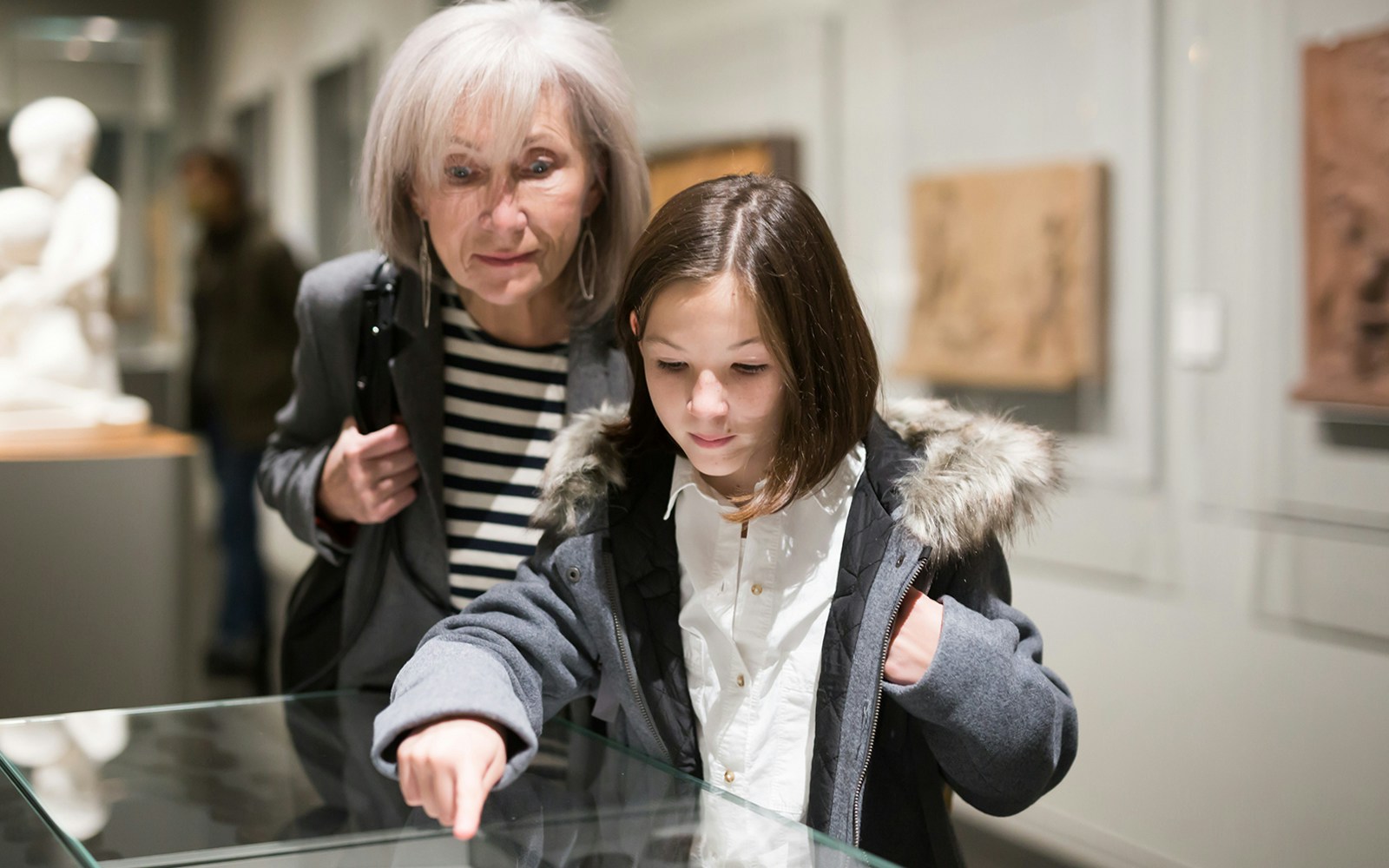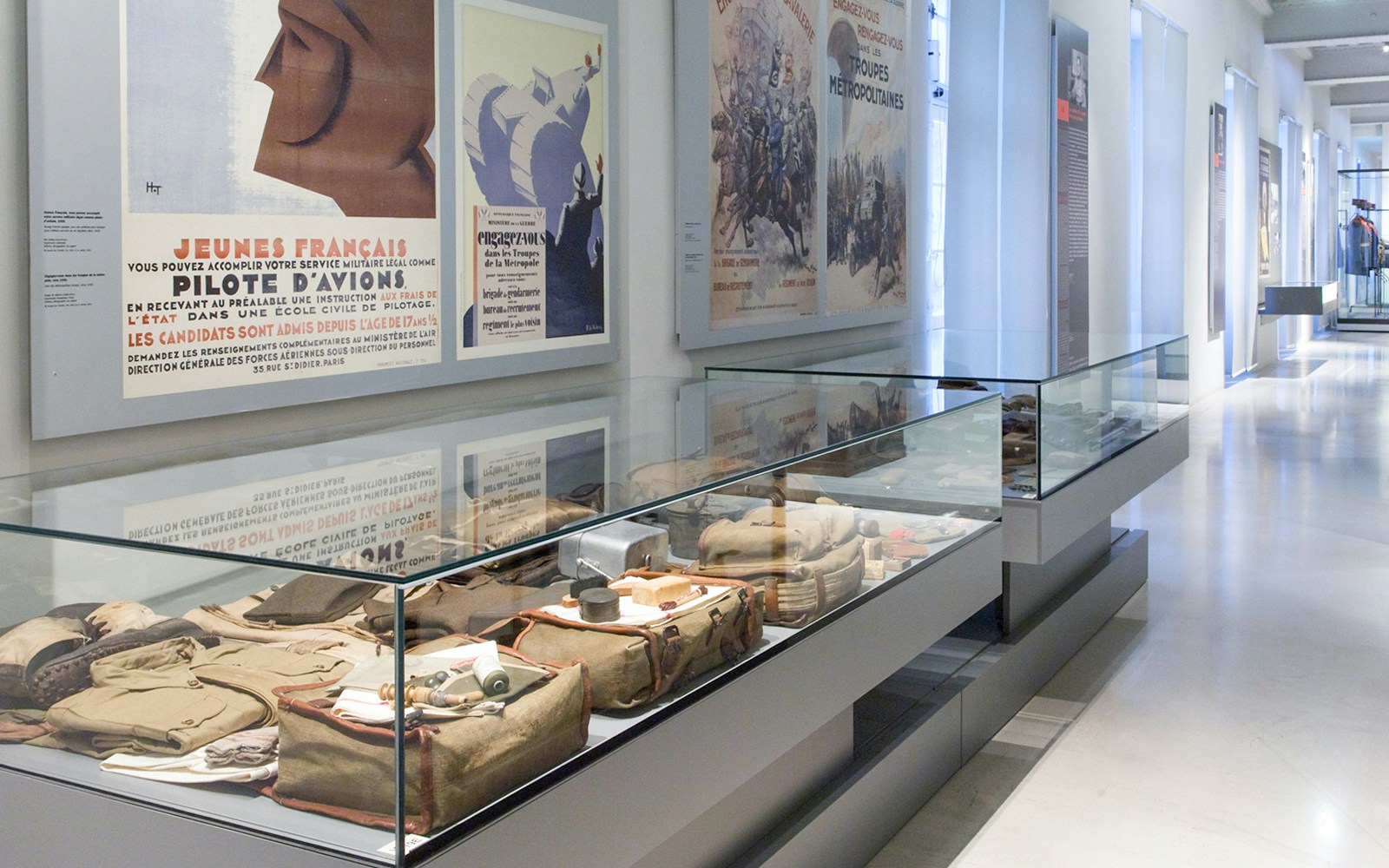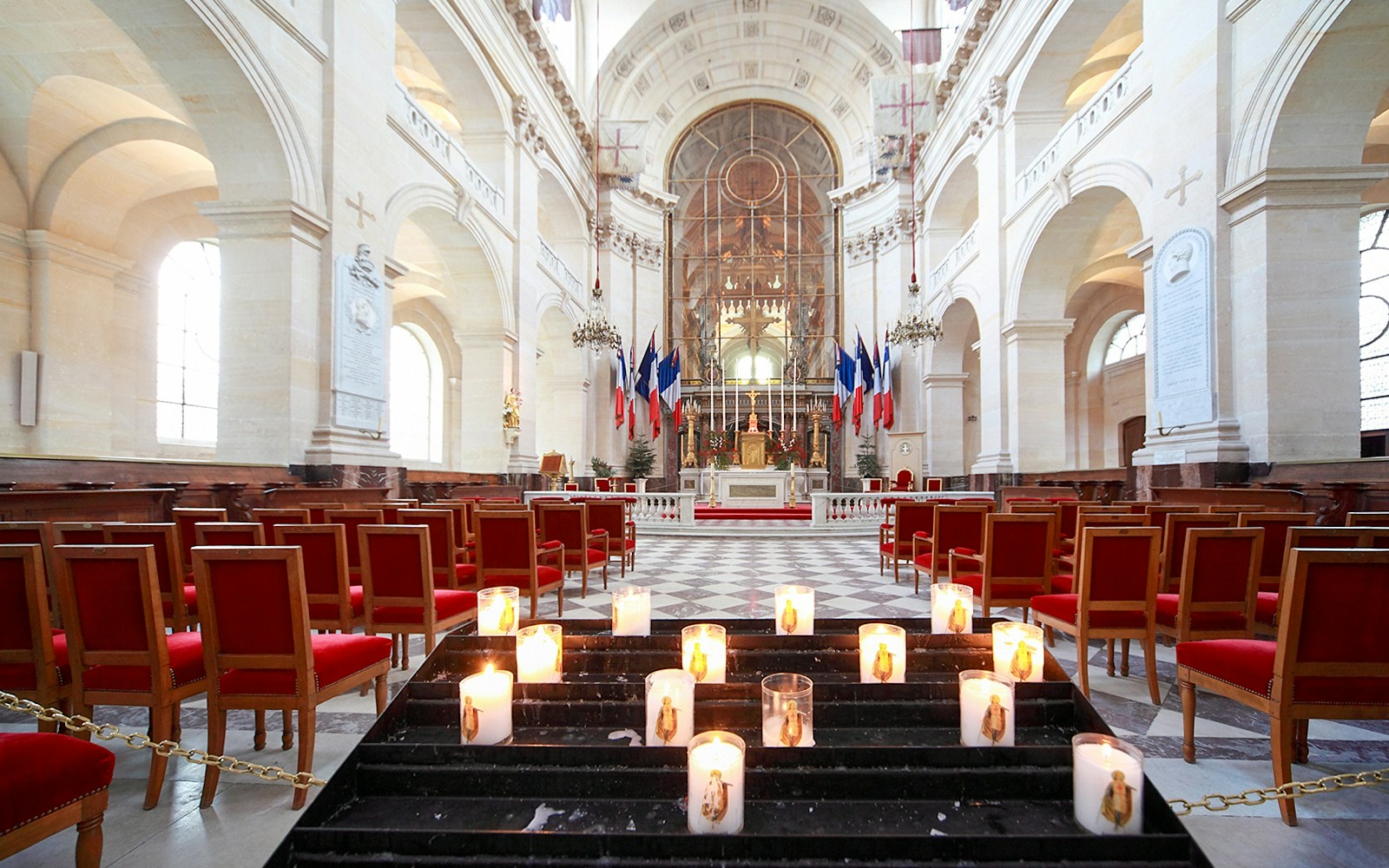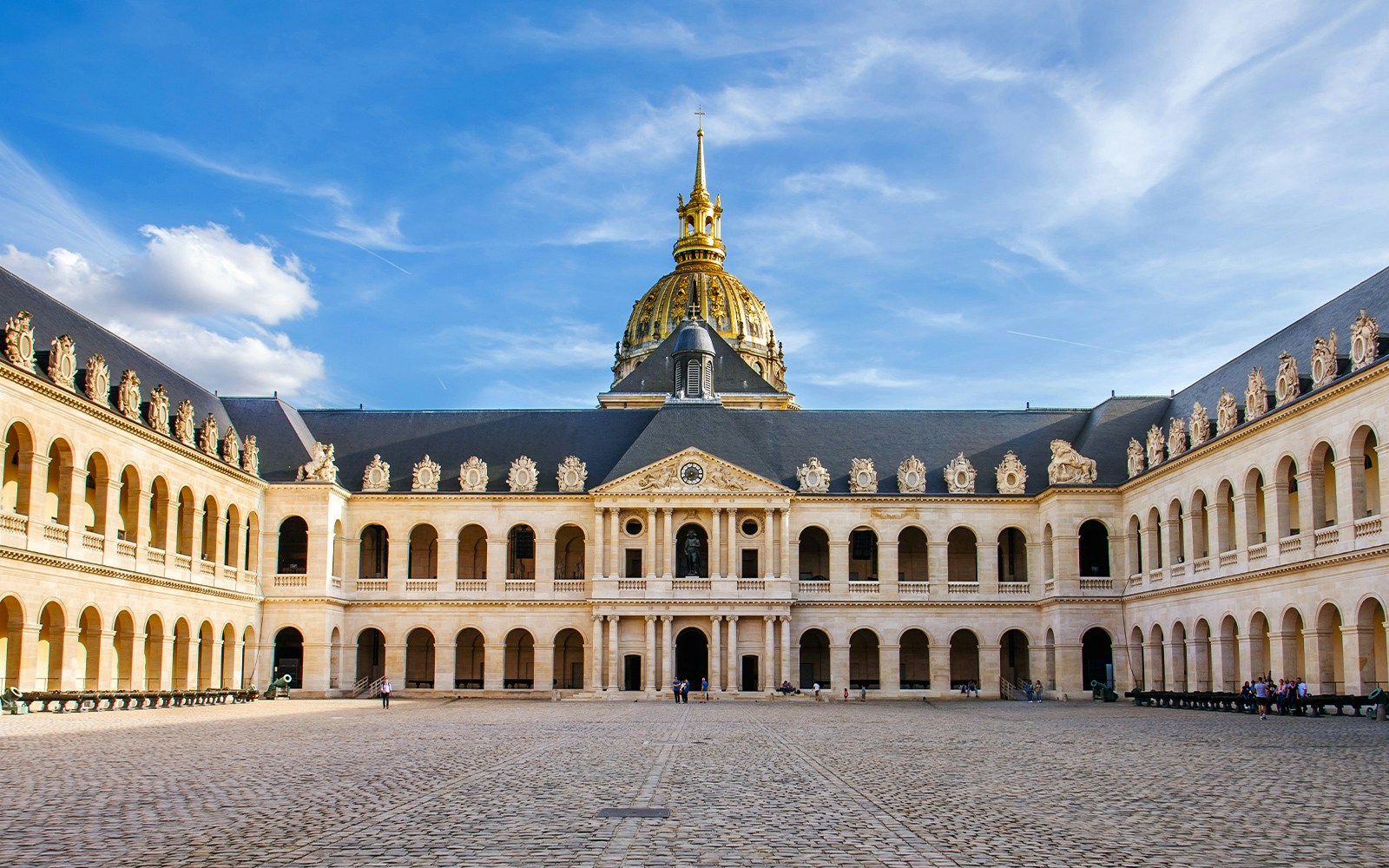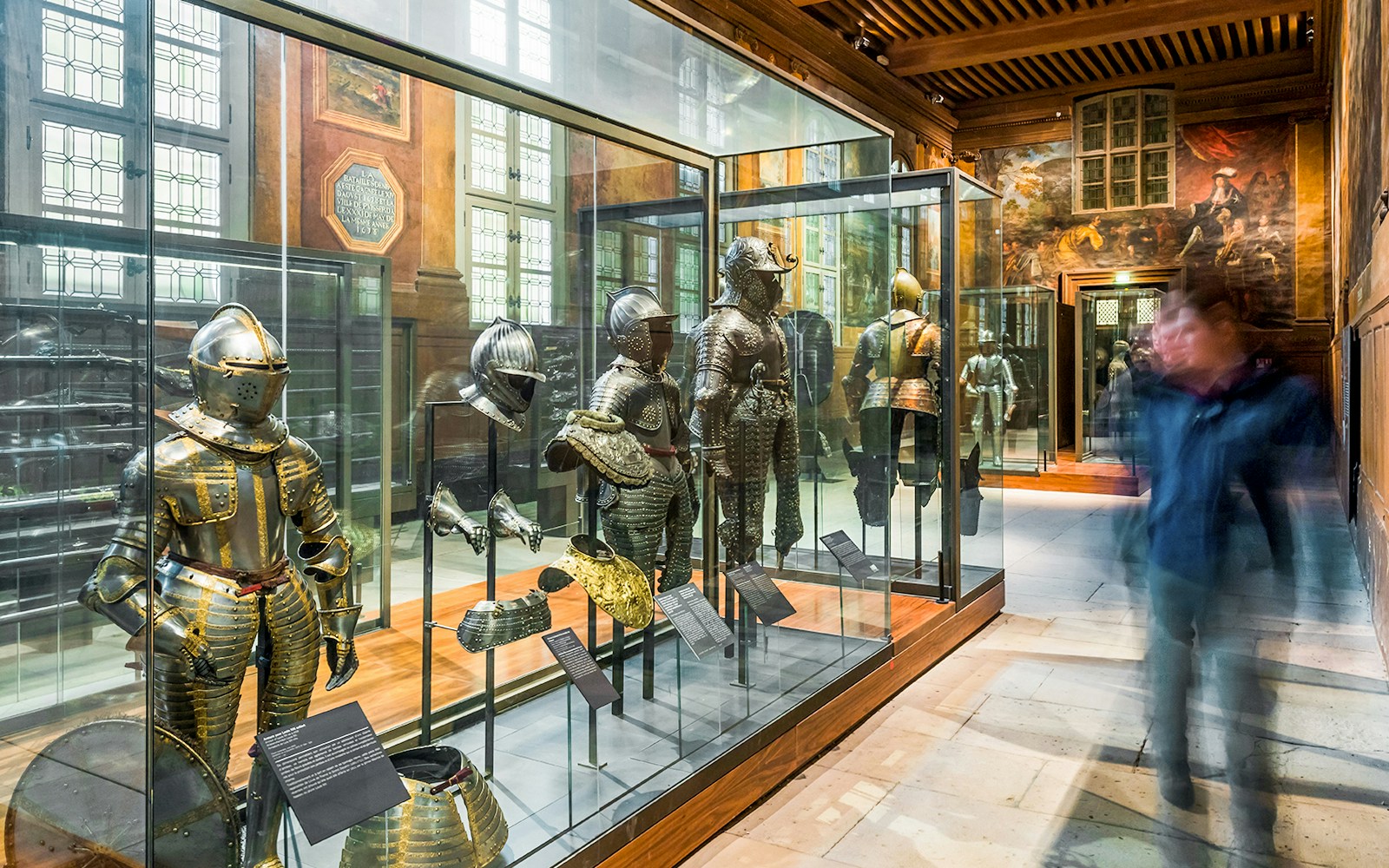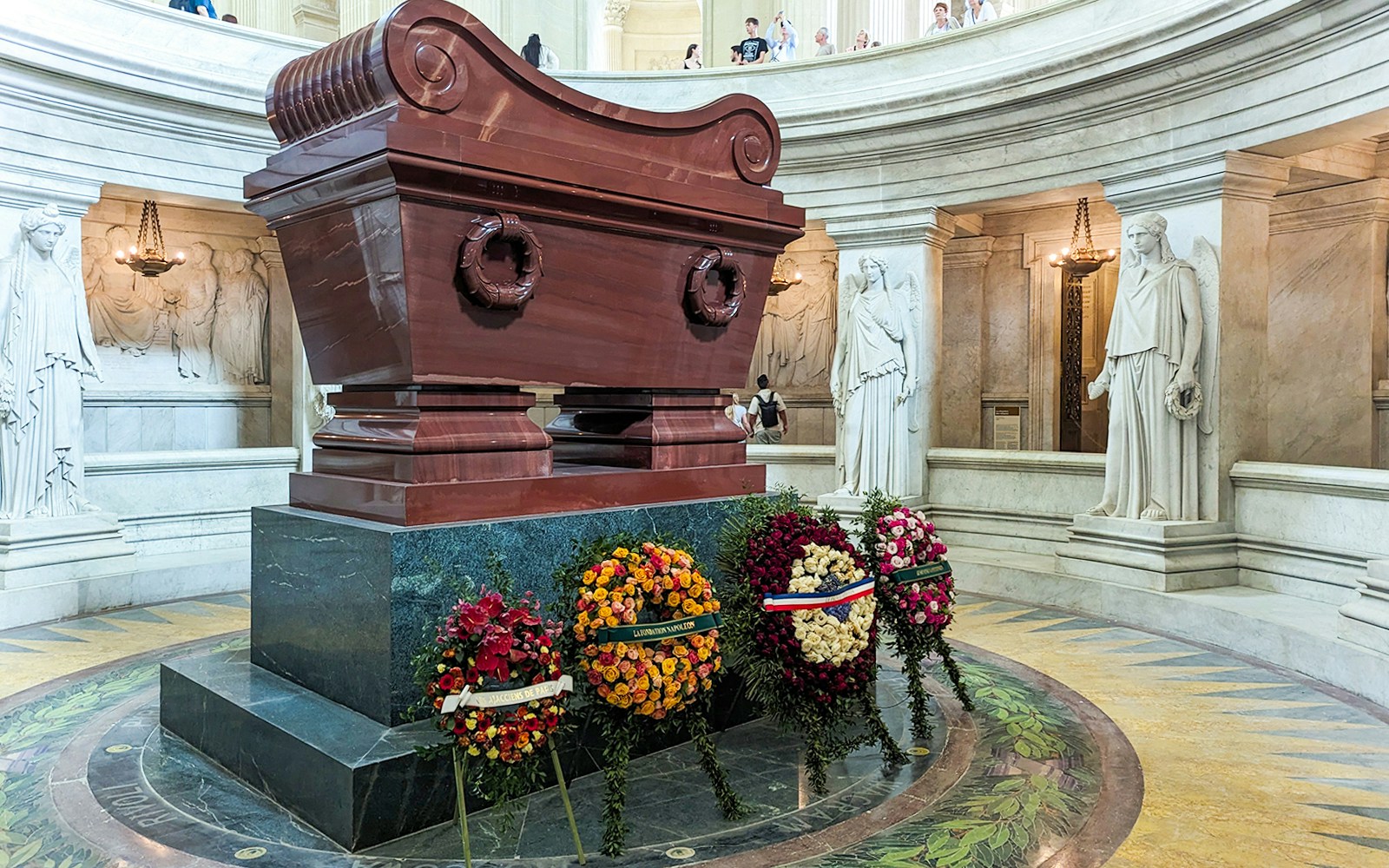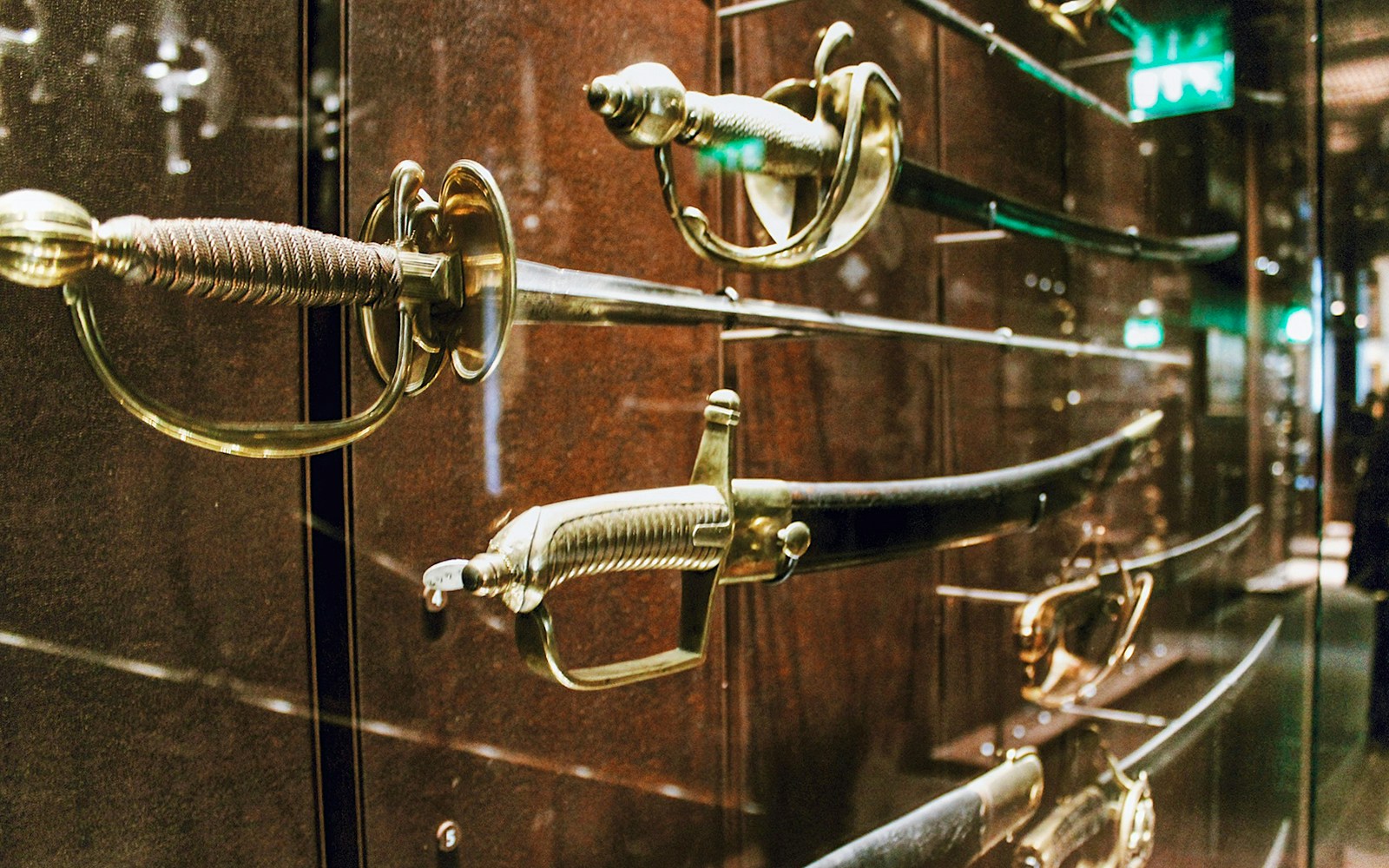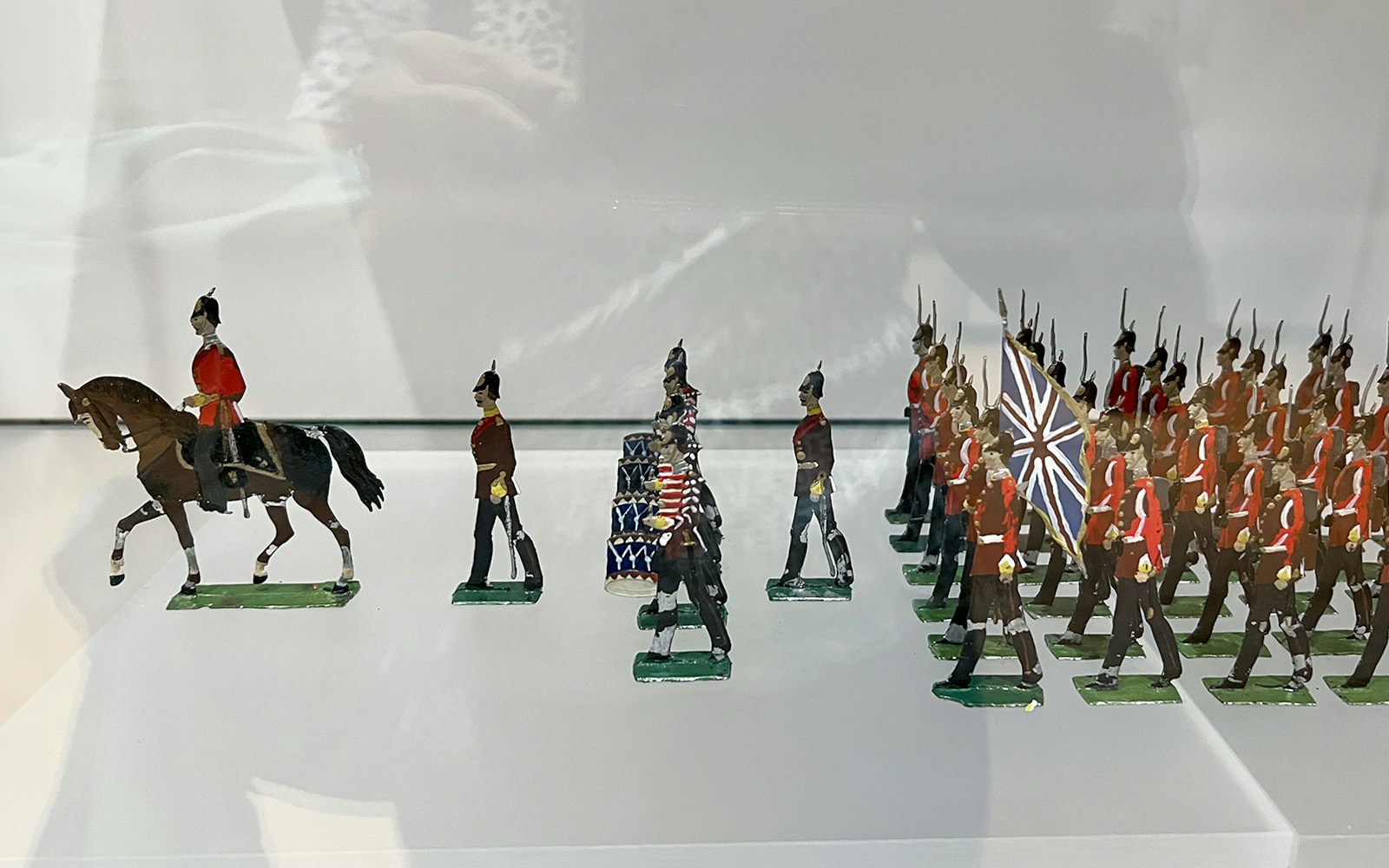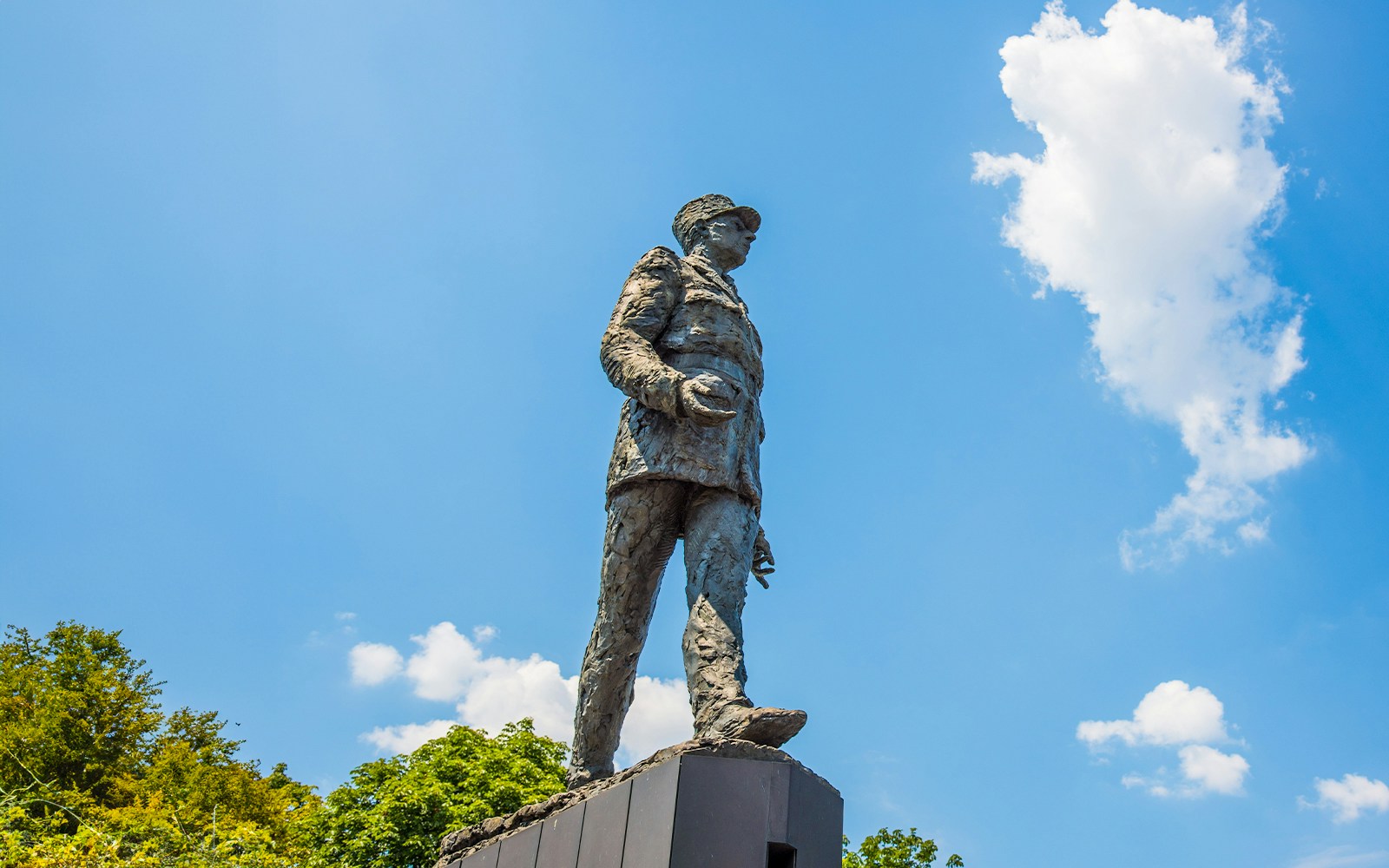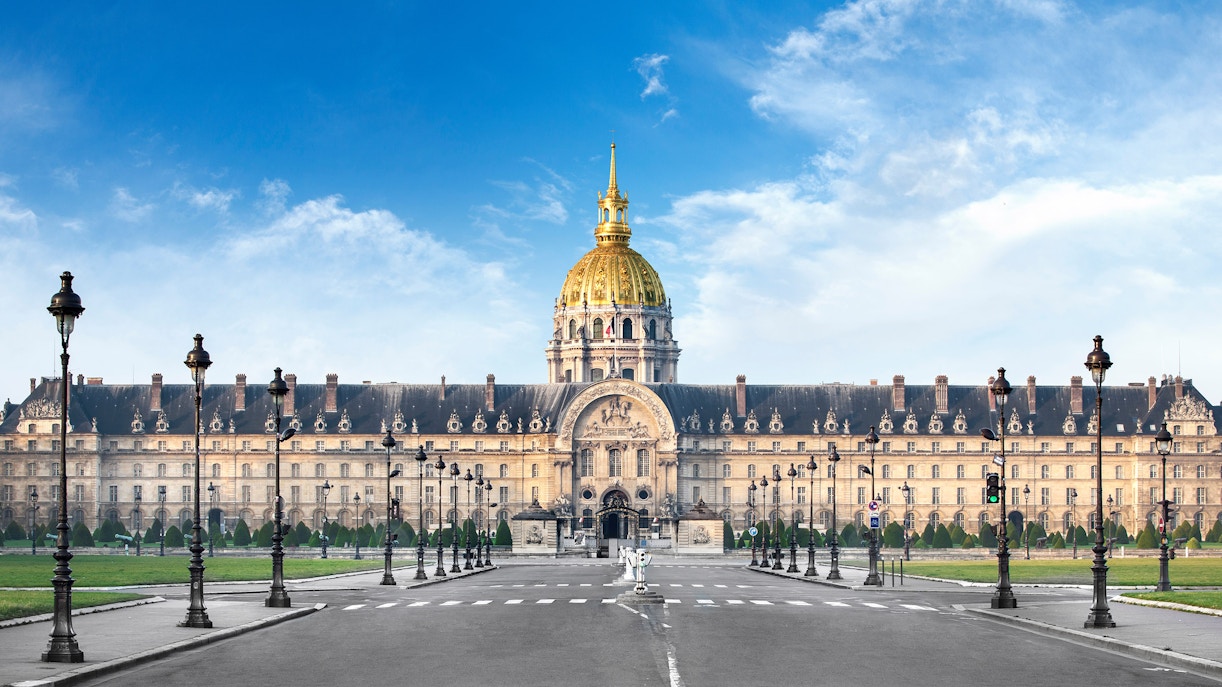Hôtel des Invalides' building is a magnificent illustration of classical French architecture. It was created by Jules Hardouin-Mansart, the principal architect of Louis XIV, and its highlight is the magnificent gold dome that is visible from all across Paris. The main structure consists of multiple wings and courtyards, but the most remarkable aspect is the dome, an incredible achievement of engineering and architecture. The complex has many noteworthy spaces, such as the Army Museum, which has a sizable collection of armor and weapons, and the tombs of various notable Frenchmen, including Napoleon Bonaparte. The most Instagrammable spot is undoubtedly the courtyard with the golden dome in the background, but the view from the top of the dome is also breathtaking.



